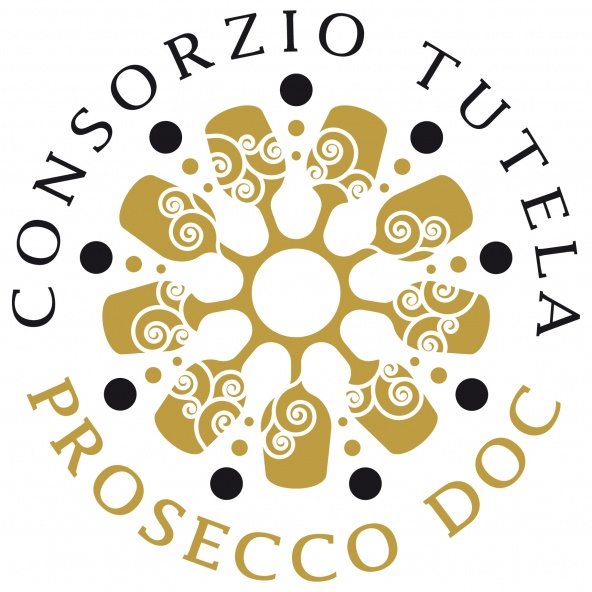The Denomination registered an increase in production of 25.4%, with 627.5 million certified bottles – including 71.5 million in the new Rosé version – as well as an increase in value of +4%
 New York, January 26, 2022 – Stefano Zanette, President of the Prosecco DOC Consortium, has revealed statistics demonstrating successful wine production achieved by the Denomination in 2021.
New York, January 26, 2022 – Stefano Zanette, President of the Prosecco DOC Consortium, has revealed statistics demonstrating successful wine production achieved by the Denomination in 2021.
Despite the challenges brought by 2020, the excitement surrounding the new category of Prosecco DOC Rosé led to record-breaking growth in Prosecco DOC production, surpassing a ceiling of half a billion bottles. The 2021 data confirmed a positive trend with an increase of 25.4 percent in total production by volume, for a total of 627.5 million certified bottles of Prosecco DOC produced – of which 71.5 million bottles were produced in the Rosé version. Most significantly, 2021 data revealed increasing premiumization of the wine category, with an increase of 4 percent in the U.S. Dollar value for the average bottle exported in 2021.
“After 10 exciting years, our goal is to continue to strengthen the Denomination’s success by planning the future of the entire supply chain, monitoring consumer trends, paying close attention to the territory and its communities, and actively involving the entire production system.” explains Stefano Zanette.
Since his first term began in 2012, Stefano Zanette’s policies have focused on 360-degree sustainability- environmental, social, and economic – along with a dedication to guarantee growth in terms of volume as well as in value, and not only from a financial point of view.
Protection and promotion remain the two main areas of action in which the Consortium operates. In the last few years, the Consortium has developed an intense promotional campaign which boosted the Denomination’s popularity world-wide. Prosecco’s popularity has led to an increase in imitation attempts, and consequently, the fight against counterfeit Prosecco has become increasingly challenging.
“In terms of promotion the commitment is very significant,” explains Luca Giavi, Director of the Prosecco DOC Consortium. “It’s a work of connecting, as well as, I would dare to say, of translating into a language suitable for the general public. It’s also a matter of a set of values that belongs to the territory, in which we would like both the Venetian community as well as that of Friuli Venezia Giulia to come together and adhere to more deeply. We share universal human values such as lightness, immediacy, cordiality, conviviality, and hospitality; qualities that consumers all over the world easily recognize in our products.”
Thanks to the work that the Consortium has been carrying out consistently over the past ten years, the Denomination has been able to obtain the attention of the most severe critics and qualified international press, as well as the trust of international markets, where in the first three quarters of 2021 the export share has increased to 30 percent.
“There is still work to be done,” continues Stefano Zanette – “We will shortly present what we will define as the 2030 Agenda of the Prosecco DOC. This is the great, crucial work that awaits us to actively involve the entire production system towards a truly shared growth, with close attention to the consumers, the territory and its communities.”
The plan is ambitious and will look at the future with new goals and vision, which will allow the Prosecco DOC Consortium to involve as many players as possible.
About Prosecco DOC
Prosecco DOC wines come in Spumante (sparkling), Frizzante (semi-sparkling) and Tranquillo (still) varieties. The wines are made from mainly the Glera grape, native to North East Italy for thousands of years, and can be combined with a maximum of 15% of the following grapes: Verdiso, Bianchetta Trevigiana, Perera, Glera lunga, Chardonnay, Pinot Bianco, Pinot Grigio and Pinot Nero. Prosecco Frizzante and Spumante varieties get their famous bubbles using the Secondary Fermentation production method, bottled under high pressure after fermentation in bulk tanks called autoclaves, as opposed to the traditional method, which bypasses the autoclaves and is used for other sparkling wine varieties. The end result is a brilliant straw yellow wine with fine, persistent perlage and aromas of white flowers, apple and pear. It is fresh and elegant on the palate with moderate alcoholic strength.
From August 11, 2020, the competent bodies (Italian Ministry of Agriculture) have allowed the production of Prosecco DOC Rosé, made from at least 85% Glera and 10-15% Pinot Nero only in the Spumante (sparkling) version and with the drier styles (from Brut Nature to Extra Dry). Prosecco DOC Rosé undergoes a longer second fermentation in the autoclaves (60 days as opposed to 30 days for Prosecco DOC), has a pale pink color and a fine and persistent perlage, and features aromas of white flowers, notes of apple and citrus, and scents of strawberry and raspberry. For more information regarding Prosecco DOC and Prosecco DOC Rosé, visit http://www.casaprosecco.com.

















